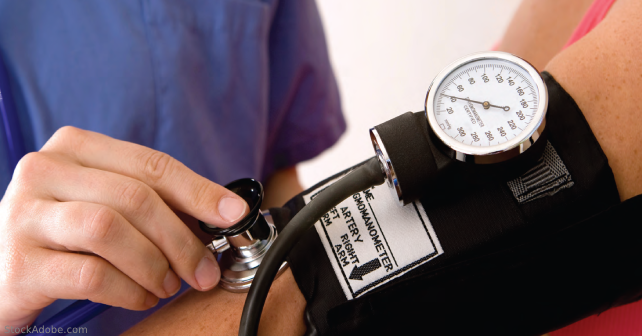
We investigated this very question, which was published in the April issue of JACEP Open (“Antihypertensive prescription is associated with improved 30-day outcomes for discharged hypertensive emergency department patients”). In a retrospective study of 93,512 hypertensive patients discharged from eight EDs, we asked whether prescription anti-hypertensive therapy was associated with a decreased risk of an adverse event (aortic dissection, acute heart failure, myocardial infarction, stroke, and hypertensive encephalopathy) within 30 days of discharge. Consistent with prior studies, we observed a low risk of events, with an adverse outcome occurring in just 0.7 percent of patients within 30 days mortality was 0.1 percent. This should reassure EPs that discharging hypertensive patients is safe.
Explore This Issue
ACEP Now: Vol 43 – No 05 – May 2024Despite the overall low rate of adverse outcomes, we found that ED prescription of anti-hypertensive therapy can further lower the risk of an adverse outcome. Prescribing antihypertensive therapy was associated with lower odds of severe adverse outcomes within 30 days (0.2 percent) compared to the group not receiving a prescription (0.7 percent), equating to a number needed to treat of 183 to prevent one adverse outcome. Most of this observed benefit was due to a decrease in heart failure events.
Additionally, we observed a lower rate of ED revisits in the treatment group (15.5 percent) compared to the group that was not treated (10 percent), with a number needed to treat of 18 to prevent one 30-day revisit to the ED. Our results indicate that while the current practice of deferring care to primary care physicians is safe, there may be an opportunity to improve outcomes for discharged hypertensive patient.
Based on our observations, a lower threshold to prescribe anti-hypertensive therapy has the potential to both prevent 30-day severe adverse outcomes in this population and to decrease ED returns. Due to its retrospective study design, these findings require confirmation with prospective trials, and further study is also needed to investigate which specific anti-hypertensives are optimal. Given the enormous number of ED patients found to have elevated BP, a more aggressive approach to the treatment of incidentally noted ED hypertension could have significant positive effects on a population-wide scale if these findings are confirmed.
 Dr. Todd is the associate residency program director at William Beaumont University Hospital.
Dr. Todd is the associate residency program director at William Beaumont University Hospital.
References
- McAlister FA, Youngson E, Rowe BH. Elevated blood pressures are common in the emergency department but are they important? a retrospective cohort study of 30,278 adults. Ann Emerg Med. 2021 Apr;77(4):425-432.
- Brody A, Rahman T, Reed B, et al. Safety and efficacy of antihypertensive prescription at emergency department discharge. Acad Emerg Med. 2015 May;22(5):632-5.
- Cho DD, Austin PC, Atzema CL. Management of discharged emergency department patients with a primary diagnosis of hypertension: a multicentre study. CJEM. 2015;17(5):523-531.
- Levy PD, Mahn JJ, Miller J, et al. Blood pressure treatment and outcomes in hypertensive patients without acute target organ damage: a retrospective cohort. Am J Emerg Med. 2015;33(9):1219-1224.
- Wolf SJ, Lo B, Shih RD, et al; American College of Emergency Physicians Clinical Policies Committee. Clinical policy: critical issues in the evaluation and management of adult patients in the emergency department with asymptomatic elevated blood pressure. Ann Emerg Med. 2013;62(1):59-68.
Pages: 1 2 3 | Single Page


No Responses to “Hypertensive Patient Discharge and Management”